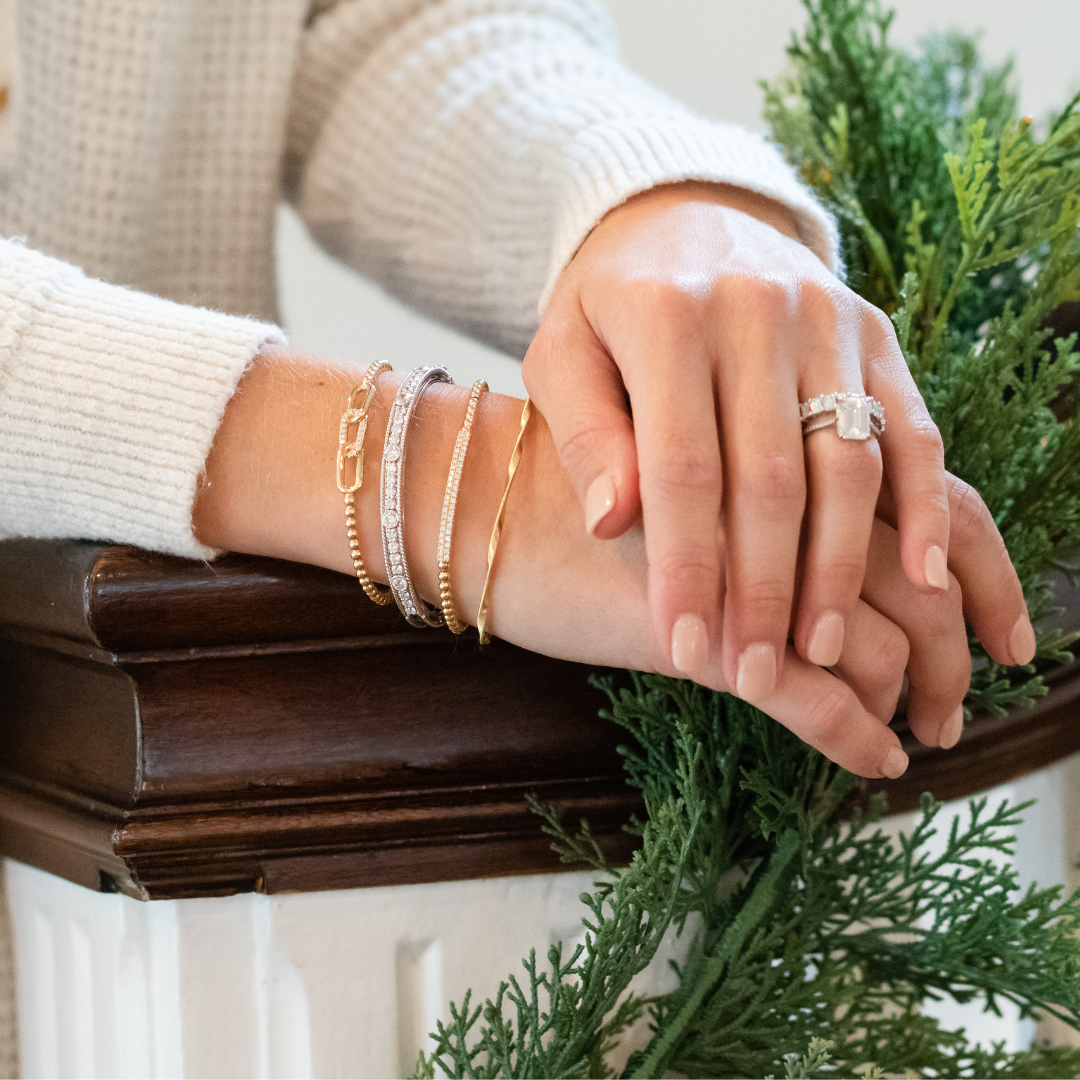
Like identical twins, palladium and white gold could stand side by side and you might have a hard time guessing which one was which. These precious metals want you to know there are lots of factors that set them apart, however. While white gold is the go-to for a lot of jewelry wearers, palladium has been on an upward trend lately, largely due to the fact that it is purer than white gold and more durable. Before we delve into their vast differences, let’s first look at what defines them.

White Gold vs. Palladium
Although they look the same, the biggest difference is in their chemical makeup. White gold is not a natural- occurring silvery-white metal, therefore, it must be combined with other elements, such as nickel, zinc, or even palladium, thus making it an alloy. Palladium, on the other hand, is a naturally white metal, and is one of six elements called the platinum group metals, which consists of six transitional metal elements: platinum, palladium, iridium, ruthenium, rhodium, and osmium. This means there is no need for combining elements, rhodium plating, nor does it contain any nickel.
Vast Difference
Price
Perhaps the biggest difference is the scarcity of palladium; in fact, it is thirty times rarer than gold. This naturally causes a huge gap in price, although the price of metal does fluctuate.
White gold is easier to manipulate when creating rings and jewelry, thus, minimizing the cost of labor and its overall price tag.
Color
As mentioned earlier, palladium doesn’t contain nickel, which allows it to remain the same color over time; in contrast, white gold rings may require a rhodium re-plating once every few years to maintain its shiny white appearance. Palladium has been proven to scratch less and is tarnish-resistant, meanwhile, white gold tends to thin and lose metal if scratched. Because of its alloyed makeup, many white gold pieces develop an aged yellowish hue over time.
Popularity
The differences are so subtle, one could say that white gold and palladium are practically identical. When jewelry shopping, people tend toward white gold based on cost and accessibility. Others will seek out palladium because it is hypoallergenic and lightweight, making it a great option for people that may not be used to wearing jewelry; there are others still who seek out the “heft” of an 18k white gold, for which palladium does not provide that same feeling. All in all, both metals are designed to be worn as everyday pieces but, bear in mind that white gold may need a little more love and care to maintain its vibrant appearance. If you’re looking to buy a gorgeous ring that will last you a lifetime, either metal is a great choice – it really is all about which makes most sense for you and your preference.
Come visit us at our Winston-Salem or Greensboro locations with all your questions about white gold versus palladium and we will help you find the perfect piece!

